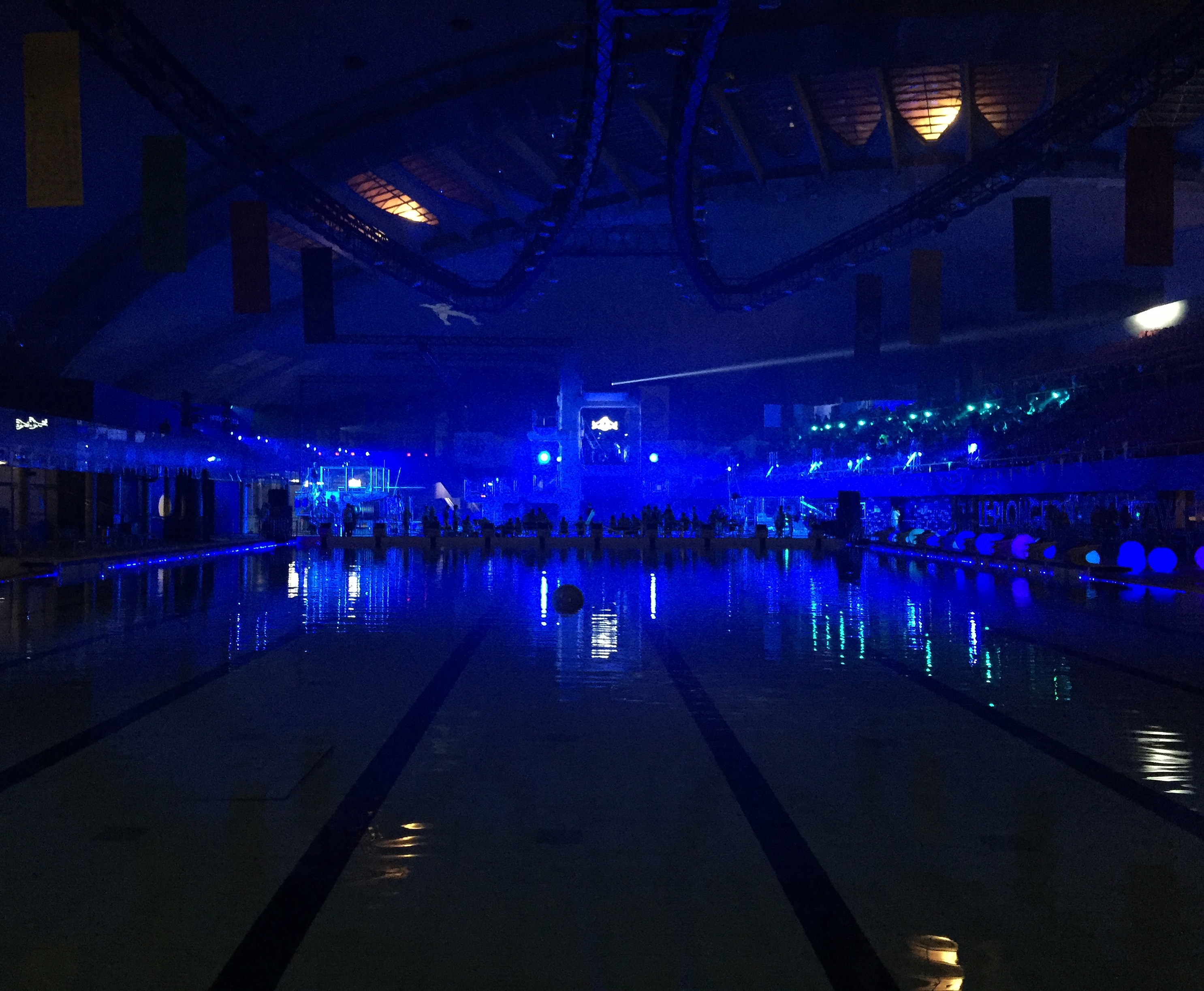The announcement that RBMA would be held in Montreal this fall left music fans both excited and apprehensive. RBMA, a self-defined global music institution, has delivered 18 years of concerts, workshops, art shows, and parties in over sixty countries, featuring some of the biggest names in the music industry. Along with high expectations about the event, some were rightfully worried that this grand-scale institution would corporatize the electronic music scene.
The Red Bull Music Academy (RBMA) experience made October in Montreal feel like an extended trip to Costco. The festival was an exciting, yet overwhelming retrospective of everything you could imagine – and it was all happening at once. With a bottomless budget and an endless calendar of events, RBMA showcased local artists and international icons on a global scale. For more than a month, RBMA delivered a continuous stream of interesting sound and sight experiences that, after the dust had settled, left some in awe and others in dismay.
The festival was an exciting, yet overwhelming retrospective of everything you could imagine.
In a month, Red Bull converted the Phi Centre into multiple deluxe studio spaces, and rented spaces such as the Olympic Pool, the Planetarium, and an enormous warehouse in Griffintown. They also turned legendary Stereo’s after-hours room into a regular club and hosted events in numerous other extravagant grand-scale spaces across Montreal. Given this, it makes sense that some would see the festival as a way to use electronic music for the commercial benefit of such a large company.
However, our critique should not be totalizing considering RBMA’s effort to highlight local artists, as well as Black, Indigenous, and musicians of colour, During the past few weeks, Marshall Allen, student of Sun Ra, talked extensively about his late teacher, the jazz pioneer who took many Black musicians under his wing and was explicit in his anti-racist and anti-colonialist stance. Inuit throat-singer Tanya Tagaq spoke about decolonization through music and the importance of anti-colonial politics to her artistic practice. Other highlights included appearances by Sampha, Kaytranada, and DJ Stingray – which barely scratch the surface of the extensive guest list. The Academy’s participants were given a platform to showcase their fresh sounds to new audiences, get international visibility, and jam out in the studio with well-known musicians.
The intervention of local organizers was noticeable, even significant, as it helped curate a culturally specific aesthetic.
RBMA’s close collaborations with Montreal organizers like Mutek or Never Apart served to subvert the institutionalization of the Academy and recognize local heroes. Moreover, many events were free, and those that weren’t rarely exceeded $15.00. The intervention of local organizers was noticeable, even significant, as it helped curate a culturally specific aesthetic experience. This showed an attempt to understand the city’s cultural pillars, and to export a high-budget transnational prototype. The marketing strategies trickled through the sound bytes, but the beams shone on mostly very high quality, well thought-out shows.
The opening show on September 24, an after-hours party held in the Mile-Ex venue Espace Reunion, kicked off the festival with a bang. The innovative use of space and well crafted visuals foreshadowed the event’s skillful organizing and attention to detail. It was great to see several amazing women and femme artists that night – a welcome subversion of the male-dominated electronic music scene. Aurora Halal played a mesmerizing live set and Rrose tore the main room apart.
“Drone Activity in Progress,” the September 30 evening event, was one of the most notable. For a few hours, it delivered Canada’s finest noise manipulators at a huge Griffintown warehouse. The corridors were lit by strobe lights as large industrial ventilators turned slowly to the sound of analog frequencies. Local electronic and ambient artist Kara-Lis Coverdale played a shimmering set of melodic, warm sounds. Her dreamy textures were abruptly cut short by a frenetic, highly experimental and dissonant set by Venetian Snares, the drum and bass artist based in Winnipeg. Though his music was loud, chaotic, and hard to swallow, his understanding of sound and space was unquestionable. His intensity retrograded perfectly with the highly anticipated, Vancouver-born ambient drone master Tim Hecker, who finished the night with melodic ambient cuts mostly drawn from his most recent album Love Streams and classic record Virgins.
RBMA delivered a continuous stream of interesting sound, sight, and experiences that, after the dust had settled, left some in awe and others in dismay.
“Dans les Abysses,” the October 23 concert that took place in the Olympic pool, provoked an unprecedented wave of critique. Out of a queue of approximately 1500 people, only around three hundred were able to participate in the surreal, hyped-up experience of floating in an Olympic pool while listening to Detroit electro. Bathing in the warm water under the towering brutalism of the pool’s architecture, while watching artists perform on concrete diving platforms was an entirely unique experience. However, the show did not entirely live up to its expectations. Though the performances were amazing, and once again Red Bull offered a singular event – it was to the detriment of most people. Eager to attend a highly glamorized, free and pioneering event after queuing for hours in the cold, hundreds were disappointed when told that they couldn’t get in.
Overall, RBMA was an exciting and fleeting addition to Montreal’s nightlife, demanding its participants to consume copious amounts of caffeine to keep up. Though some events could have been better organized, the festival brought great artists to new venues, introduced their music to audiences that may not have been aware of Montreal’s diverse range of talent, and encouraged public participation through free events.

